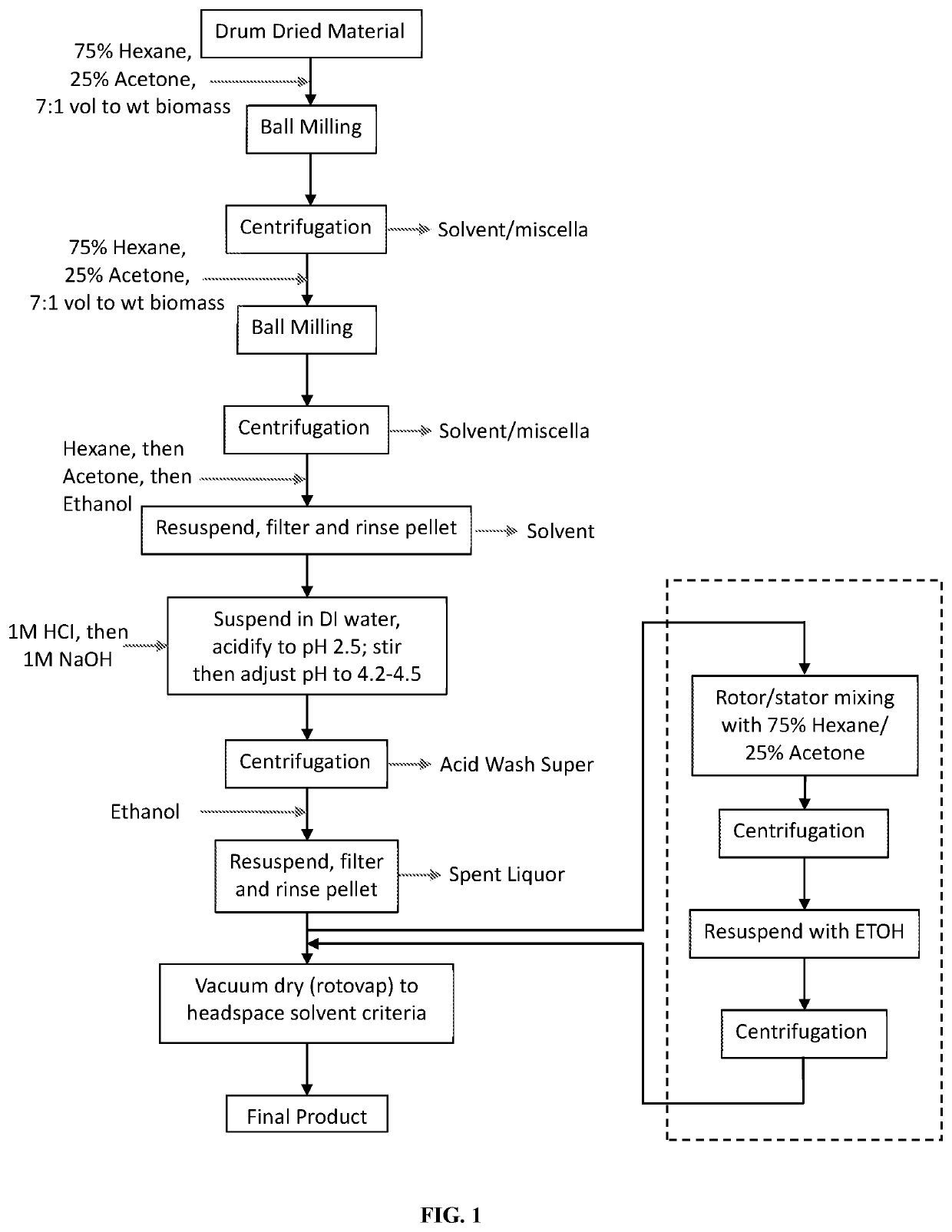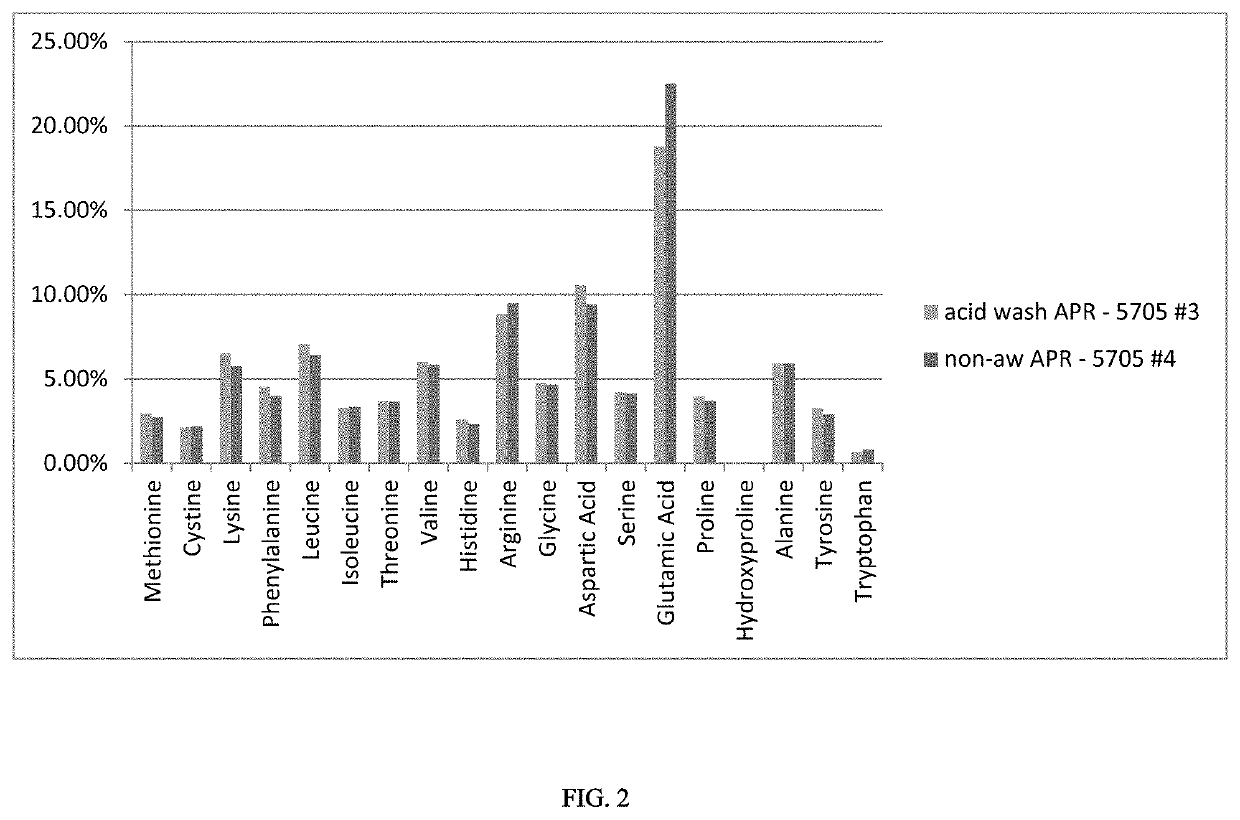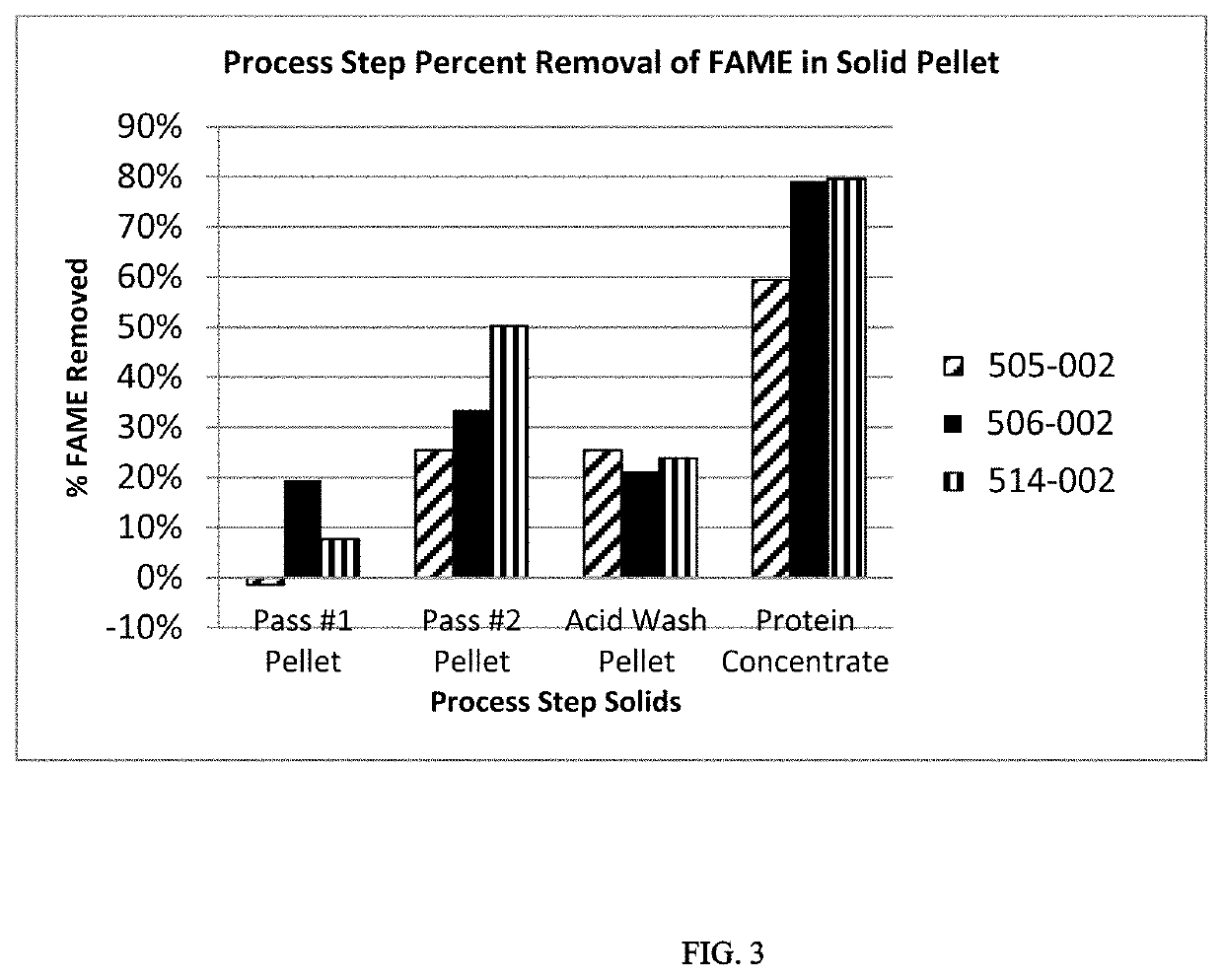Protein rich food ingredient from biomass and methods of production
a technology of food ingredients and biomass, applied in the field of protein rich food ingredients from biomass and methods of production, can solve the problems of limiting the commercial use of food manufacturers, consuming a large amount of productive land and water resources, and limiting the ability of sources to supply sustainable supplies of proteins, etc., to achieve the effect of improving the organoleptic properties of a proteinaceous composition and pleasing organoleptic properties
- Summary
- Abstract
- Description
- Claims
- Application Information
AI Technical Summary
Benefits of technology
Problems solved by technology
Method used
Image
Examples
example 1
[0059]This example provides a general scheme for producing a dried protein material or concentrate (e.g., a powder) containing a proto-protein from algal biomass. This example illustrates a specific method but persons of ordinary skill with resort to this disclosure will realize other embodiments of the methods, as well as that one or more of the steps included herein can be eliminated and / or repeated. Furthermore, any of the steps described herein can be included in any of the methods.
[0060]In this example algae (chytrids) of the genus Aurantiochytrium sp. were used and were cultivated in a fermenter containing a marine medium containing 0.1 M glucose and 10 g / L of yeast extract (or peptone substitute), which supplied a source of organic carbon. The medium also contained macronutrients, including 0.1M NaCl, 0.01M CaCl2, 0.04M Na2SO4, 0.03M KH2PO4, 0.04M (NH4)2SO4, 0.006M KCl, 0.02M MgSO4), plus nanomolar quantities of vitamin B12, thiamine and biotin. The culture was maintained at ...
example 2
[0065]Three independent fermentations were performed on algae of the genus Aurantiochyrium sp. in medium similar to that of Example 1 and the mass of the acid wash supernatant stream was quantitated, and protein determined by the Dumas method (quantitative determination of Nitrogen by elemental analysis). As shown in Table 2 below, the acid wash removed between 8.8% and 15.8% of the initial feedstock mass. Converting nitrogen content to protein content by the calculation (N*6.25) estimates the protein content of the acid wash solids is 12.15% to 15.50% protein. The protein removed by the acid wash step ranged from 2.01% to 3.4% of the initial protein in the feed.
[0066]
TABLE 2Acid Wash Supernatant Masses and ProteinSample 825Sample 908Sample 319Mass removed,15.80%14.00%8.80%% of feedAcid wash12.60%12.15%15.50%Solids %proteinProtein, % of3.40%2.70%2.01%feed Protein
example 3
[0067]An additional example of the impact of the acid wash upon amino acid composition is shown below. Two separate processes were performed where the acid wash supernatant was dialyzed and dried, and analyzed for amino acid composition. An Aurantiochytrium (chytrid) strain was processed as described above, the acid wash supernatant and algal protein concentrate were analyzed and compared to the initial dry biomass feed. It was found that glutamic acid (or glutamic acid and glutamine) and arginine are selectively removed from the biomass during the acid wash.
[0068]Without wanting to be bound by any particular theory it is believed that the acid wash step prepares the proteinaceous material for a preferential protein removal so that the content of generally unwanted amino acids arginine, glutamic acid (or glutamic acid and glutamine), and hydroxyproline is lowered in the final protein product versus the raw algal protein. After acid washing the samples were subjected to two additiona...
PUM
 Login to View More
Login to View More Abstract
Description
Claims
Application Information
 Login to View More
Login to View More - R&D
- Intellectual Property
- Life Sciences
- Materials
- Tech Scout
- Unparalleled Data Quality
- Higher Quality Content
- 60% Fewer Hallucinations
Browse by: Latest US Patents, China's latest patents, Technical Efficacy Thesaurus, Application Domain, Technology Topic, Popular Technical Reports.
© 2025 PatSnap. All rights reserved.Legal|Privacy policy|Modern Slavery Act Transparency Statement|Sitemap|About US| Contact US: help@patsnap.com



